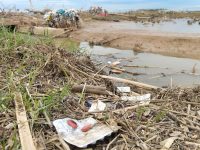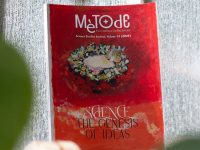Sea-level rise
Which is the role of glaciers and polar ice sheets?
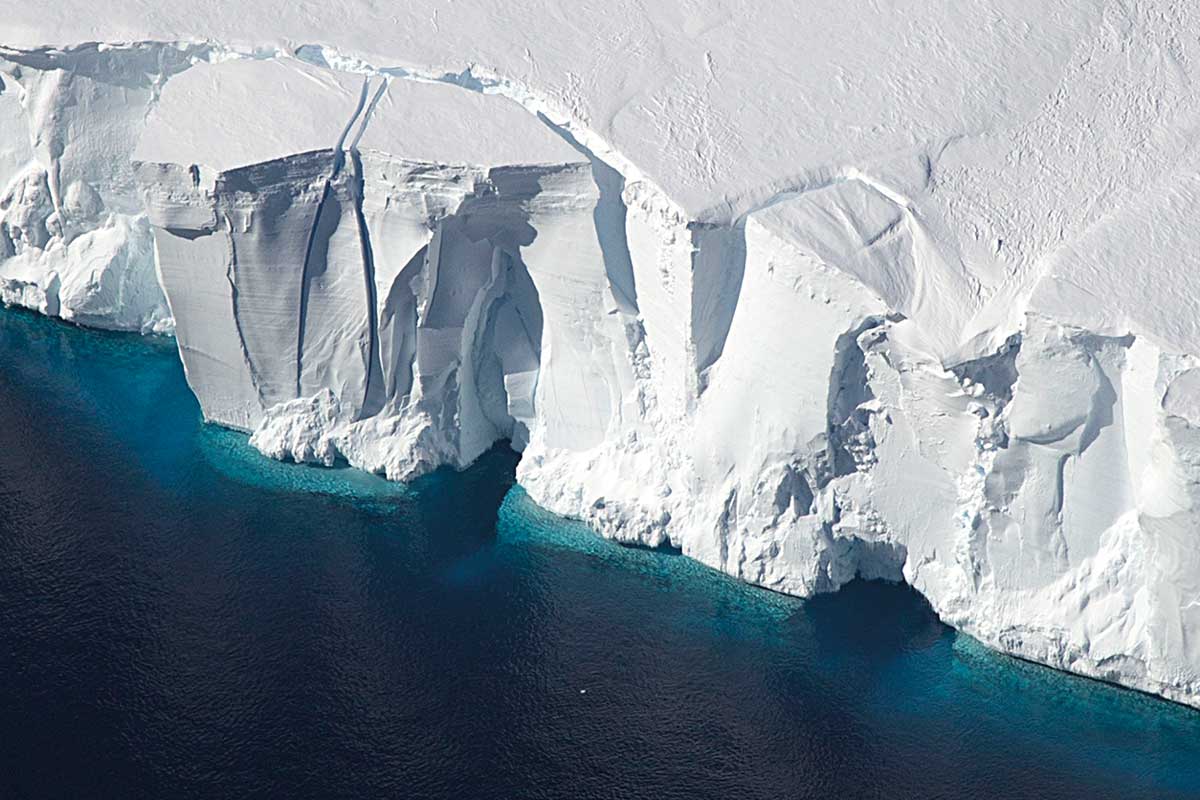
Sea-level has been rising at an accelerated rate during recent decades and is projected to continue increasing at an accelerated rate over the twenty-first century and beyond, mostly as a result of anthropogenic warming. A substantially raised sea level can have severe impacts on low-lying coastal areas, including coastal erosion and flooding of inhabited areas. Under continued climate warming, these impacts will be exacerbated by extreme meteorological events and extreme wave heights, posing severe risks to the human communities and coastal ecosystems. In this paper we review the recent advances on the contributions of glaciers and sheets to sea-level rise, in the light of the recently released IPCC Special Report on the Ocean and Cryosphere in a Changing Climate.
Keywords: Sea-level rise, glacier, ice-sheet, glacier mass balance, landed ice losses.
Introduction
Sea level has changed much in the past, in the order of tens of metres, in parallel with glacial cycles. Currently, it is increasing at a rate that has accelerated over recent decades, mostly as a result of anthropogenic warming. Low-lying coastal zones (<10 m above sea level) are at present inhabited by more than 680 million people, which is around 10 % of the world’s population. An accelerated rising sea level, its associated flooding of coastal areas and the expected increase in the frequency of extreme sea-level events are therefore a matter of concern to human kind. We analyse in this paper the current and the projected rates of sea-level rise (SLR), with focus on the contribution to SLR by mass loss from glaciers and ice sheets. There is a huge number of recent studies on this matter. The publication of the IPCC Special Report on the Ocean and Cryosphere in a Changing Climate (SROCC) (IPCC, 2019), and its condensed Summary for Policymakers (SPM), which provide updated data and consensus estimates, will alleviate the need to refer to a large amount of bibliographical sources, as they can easily be found in that report. Consequently, we will refer frequently to it, indicating the particular bullets of the SPM and the sections of the full report where further detail and references can be found.
In what follows, we will often present data resulting from statistical estimates by indicating its median and its likely range (the central 66 % or, in other words, the range 17–83 % of its probability distribution), as shown in this example: SLR of 3.6 (3.1–4.1) mm/yr.
Present sea-level rise rate and current contributions
The average rate of global mean sea level (GMSL) rise for the period 2006–2015 is of 3.6 (3.1–4.1) mm/yr, and shows a clear acceleration when compared with the average rate for the period 1901–1990, of 1.4 (0.8–2.0) mm/yr. As a consequence of this sustained increase, the mean sea level has risen a total of 0.16 (0.12–0.21) m over the period 1902–2015. This change stems from processes resulting from global warming, which has been estimated, for the period between 1850–1900 and 1986–2005, as 0.63 (0.57–0.69) °C. In particular, of the current SLR of 3.6 mm/yr, 1.8 (1.7–1.9) mm/yr is attributed to wastage from glaciers and ice sheets1 , while 1.4 (1.1–1.7) mm/yr corresponds to thermal expansion of the ocean (Figure 1). The current estimated contribution from changes in the land water storage (at surface and underground) is negative, of −0.21 (−0.36–0.06) mm/yr., meaning that they contribute to lower the sea level. Taking into account the median values of these estimates, we see that 0.6 (out of 3.6, i.e., 17 %) mm/yr of observed SLR rise are unexplained, though within the uncertainty ranges (IPCC, 2019, SPM-A3.1, §4.2.2).
«The collapse of ice shelves increases the export of landed ice to the ocean, hence indirectly contributing to rising the sea level»
In this study we focus on the contributions from glaciers and ice sheets, i.e., from the landed ice masses. We note that sea-ice loss does not contribute to SLR, as the lower density of ice compared with water is the reason for its flotation, as stated by Archimedes’ principle. Therefore, when sea ice melts to become water again it occupies less volume, exactly equal to that of its submerged part when it was ice. For the same reason, neither the melting of floating ice tongues or ice shelves contributes to SLR. However, the collapse of ice shelves contributes to the acceleration of the outlet glaciers feeding the ice shelves, thus increasing the export of landed ice to the ocean, and hence indirectly contributing to SLR (Rott et al., 2018).
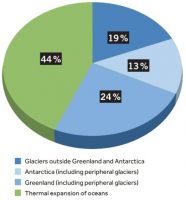
From the 1.8 mm/yr contribution to SLR by mass loss from glaciers and ice sheets over 2006–2015, 0.61 ± 0.08 mm/yr correspond to glaciers outside of Greenland and Antarctica, 0.77 ± 0.03 mm/yr to Greenland (the ice sheet plus the glaciers on its periphery, disconnected from the main ice sheet) and 0.43 ± 0.05 mm/yr to Antarctica (the ice sheet plus its peripheral glaciers) (IPCC, 2019, SPM-A1.1, §3.3 & 4.2.2). Their corresponding shares of the sum of positive observed contributions are shown in Figure 1. We note the large contribution from glaciers as compared with ice sheets, taking into account its much lower total volume (the total volume of ice stored in glaciers, and in the Greenland and Antarctic ice sheets are roughly 0.5, 7 and 58 m sea-level equivalent, which means <1 %, ~11 % and >88 %, respectively; IPCC, 2019). This is due to the much shorter response time of glaciers to climate changes as compared with the ice sheets, due to their significantly smaller size.
As we see, the Greenland Ice Sheet is currently losing mass at roughly twice the rate of the Antarctic Ice Sheet, though this could change in the coming centuries, as we will discuss later. The contribution from Greenland to SLR over 2012–2016 was quite similar to that over 2002–2011 but much larger than over 1992–2001, period at which the ice sheet mass was nearly in equilibrium. However, the contribution from Antarctica over 2012–2016 was nearly double than over 2002–2011, and four times larger than over 1992–2001. Regarding glaciers, their mass loss over 2006–2015 has been estimated as 9–10 % larger than over 1993–2015, and 33–37 % larger than over 1970–2015. The percent ranges depend on whether the estimates are based on observations or on models calibrated with observations, and whether they include or exclude the glaciers peripheral to the Greenland and Antarctic ice sheets (Bamber et al., 2018; Marzeion et al., 2017; Zemp et al., 2019).
Physical mechanisms of mass loss from glaciers to the ocean
There are various mechanisms of mass loss from glaciers and ice sheets (Figure 2), each predominant at a certain environment. Ice melting at surface and subsequent runoff to the ocean is an important mechanisms of mass loss for all landed ice masses except the very high mountain glaciers and the Antarctic Ice Sheet, where surface temperatures are too low for melting except on the Antarctic Peninsula and some coastal areas during the summer. Sublimation is the dominant mechanism of mass loss in very cold environments where surface temperatures rarely reach the melting point, even in summer. Although sublimation is actually a mass loss to the atmosphere, in the end, upon condensation and precipitation, it feeds the ocean. Note that not all glacier ice that melts at surface ends up on the ocean. An important fraction of the surface melting, especially that produced at the accumulation zones of glaciers and ice sheets, percolates through the snow and firn2, and then refreezes. Also, it can remain during the winter in the form of firn aquifers, as has been observed in certain accumulation zones of southeast Greenland (Foster at al., 2013). In Greenland as a whole, during 1960–2014 only around half of the surface melt ran off (Steger et al., 2017). Even part of the meltwater leaving the glaciers can sometimes not reach the ocean. For example, in High Mountain Asia some proportion of the glacial meltwater is taken up by aquifer recharge and irrigation, especially in the cases of closed drainage basins (Brun et al., 2017).
«The Greenland Ice Sheet is currently losing mass at roughly twice the rate of the Antarctic Ice Sheet»
For the glaciers and ice sheets ending on sea or lake, iceberg calving and submarine melting at the glacier front and under the floating ice tongues and ice shelves is another important mass loss mechanism, especially in the polar regions. Although calving and submarine melting are physically distinct mechanisms, in practice it is very difficult to estimate their separate contributions. For this reason, they are often grouped together under the term ice discharge3, which is much easier to measure (commonly, using remote sensing techniques), by computing the mass flux through flux gates close to the calving fronts, or at the grounding lines4 in the case of floating tongues or ice shelves. This mass flux is computed as the glacier velocity (often measured from satellite synthetic aperture radars or optical imagery) times the section of the flux gate (normally measured using ground-penetrating radar techniques) and times the ice density. These losses largely depend on the glacier velocity, and thus glacier flow acceleration results in increased losses, and associated thinning of the zones from which the glacier ice was drawn. For this reason, they are also referred to as dynamic thinning.
The Antarctic Ice Sheet mass loss is largely dominated by dynamic thinning, which in recent decades has become especially relevant in the western part of the ice sheet (in particular, the Amundsen Sea Embayment) and the Antarctic Peninsula region. In the first case, driven by an increase in sub-ice shelf melting due to the advent of relatively warm Circumpolar Deep Water (Jenkins et al., 2018) and, in the second, driven by the disintegration of certain ice shelves and its associated reduction or loss of ice-shelf buttressing over the outlet glaciers feeding the shelves (Reese et al., 2018). In the case of the Greenland Ice Sheet, mass losses during recent decades have been approximately balanced between dynamic thinning and surface melting and runoff, but in recent years the latter have become dominant, accounting for 42 % of losses for 2000–2005, 64 % for 2005–2009 and 68 % for 2009–2012 (Enderlin et al., 2014). The processes behind incursions of warm water in coastal Greenland that force glacier retreat, and the response of glaciers to ocean forcing, are still poorly understood (Cowton et al., 2018; Straneo et al., 2013).
«Along the twenty-first century, both thermal expansion of the ocean and mass loss from glaciers and ice sheets will continue to be the main contributors to the rise of the sea level»
Though we have focused on mass loss mechanisms, we note that the glacier contribution to SLR results from the net balance between mass gains and mass losses, known as mass balance. The main source of glacier and ice-sheet mass gains is indeed the ocean, through evaporation from oceans, condensation in clouds and snow precipitation over the landed ice masses. Under a warming climate, higher evaporation and subsequent snow precipitation on polar and high-mountain areas is expected. In fact, in Antarctica mass gains due to increased snowfall have partly offset losses by dynamic thinning, in particular in the Antarctic Peninsula (Medley & Thomas, 2018). In Greenland, the decrease in summer North-Atlantic Oscillation following the 1990s has resulted in anticyclonic weather, with reduced cloud cover and snow precipitation, and increased shortwave insolation, which explains most of the post-1990s melt increase (Hofer et al., 2017).
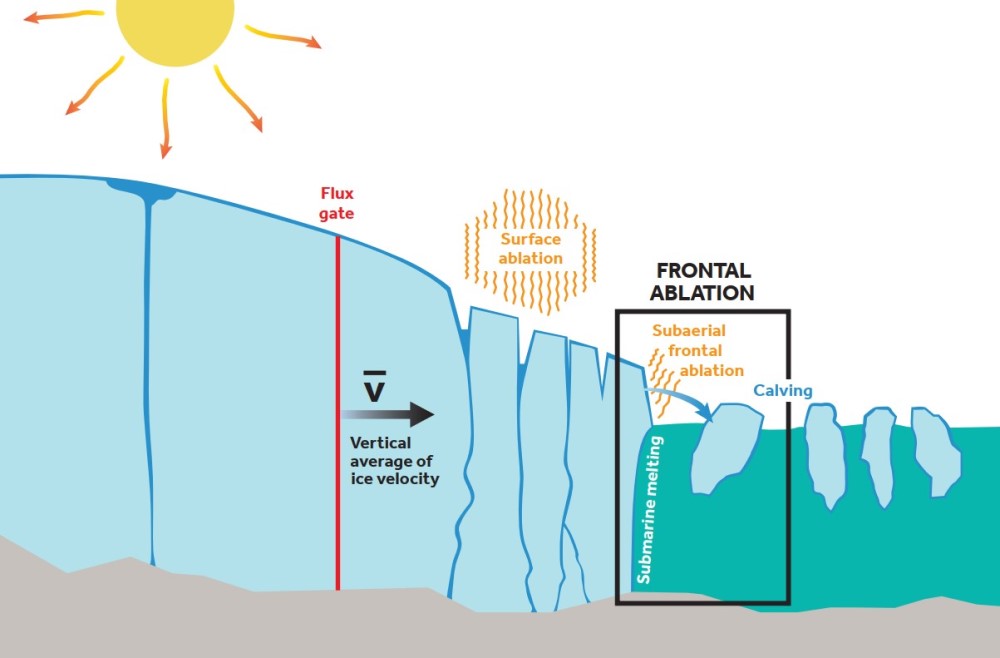
Figure 2. Illustration of typical mechanisms of mass loss at the front of a tidewater glacier. In the case of a floating glacier tongue or an ice shelf, there would also be submarine meting under the tongue or the shelf. Frontal ablation encompasses iceberg calving and submarine and subaerial frontal melting. Surface ablation includes surface melting (and subsequent runoff) and sublimation. / Source: Javier Lapazaran – Universidad Politécnica de Madrid
Projections of future sea-level rise under various emission and climate scenarios
In the usual IPCC language, the term projections is used to refer to predictions of future evolution under assumed greenhouse gasses’ emission scenarios. Since the IPCC’s Fifth Assessment Report (AR5), the so-called Representative Concentration Pathway (RCP) scenarios are used. They are labelled after its associated radiative forcing5 value in 2100 (originally, they were 2.6, 4.5, 6, and 8.5 W/m2). These RCPs were consistent with certain socio-economic assumptions, but are being substituted by the Shared Socioeconomic Pathways (SSP), aimed to provide flexible descriptions of possible futures within each RCP. Together with the SSPs, additional RCPs (1.9, 3.4, 7) were introduced. RCP1.9 is of particular interest, as it limits global warming to below 1.5 °C, which is the goal of the Paris Agreement. In what follows, we will mostly focus on RCP2.6 and RCP8.5, as low-end and high-end scenarios, to provide a range of possible impacts.
«Expected impacts from the rise in sea level include coastal erosion and flooding, which will be exacerbated under climate warming»
It is important to note that the projections that we will discuss in what follows are based on the SROCC (IPCC, 2019), which uses new estimates with respect to those of AR5 only for Antarctica. For glaciers and for Greenland, as well as for thermal expansion of the ocean and land water storage, the projections are identical to those of AR5. The main reason for this is the lack of updated climate simulations from the Coupled Model Intercomparison Project (CMIP) of the World Climate Research Programme (WCRP), which provide information on the evolution of climate and the associated changes in the oceans, glaciers and ice sheets. Results from the CMIP5 were used for AR5. However, new estimates from CMIP6 are not yet available; they are expected to be used in the IPCC 6th Assessment Report (AR6). In the case of Antarctica, several continental-scale estimates of future Antarctic ice loss, under various emission scenarios, have been made since AR5. Even if using CMIP5 results, these models have provided probabilistic information on associated uncertainties, which has allowed a quantitative assessment of the uncertainty in the dynamic mass losses of the whole of Antarctica, which was not possible in AR5. Hence, updated estimates for Antarctic mass loss projections have been included in IPCC (2019).

Table 1. Global mean sea level rise with respect to the average value for 1986–2005 under Representative Concentration Pathways (RCP) emission scenarios 2.6 and 8.5, and glacier and ice-sheet contribution for 2015–2100 and their shares of the total projected global mean sea level rise in 2100 (IPCC, 2019, SPM-B1.1, B1.2 & B3.1, §4.2.3)
The projected global mean sea-level rise to the end of the twenty-first century is shown in Table 1. The associated rates in 2100 are 4 (2–6) mm/yr under RCP2.6, and 15 (10–20) mm/yr under RCP8.5, i.e., they range between close to present and four times as large (IPCC, 2019, SPM-B3.3, §4.2.3). Table 1 also shows the projected contributions to 2100 by glaciers and ice-sheets. The wide range of uncertainty at the end of the century is mostly due to the uncertainty in the projected contributions from the ice sheets, especially in Antarctica.
We note that the total contribution from glaciers to SLR from present till the end of the twenty-first century is still large. However, its rate of contribution along this century and beyond is expected to decrease in comparison with that of the ice sheets, as glaciers’ area and volume substantially shrink and many glaciers disappear altogether, especially at the lower latitudes and altitudes (Hanna et al., 2020; Hock et al., 2019). Greenland ice loss during the twenty-first century will be dominated by surface mass losses, rather than dynamic ice discharge to the ocean, regardless of emission scenario, while that of Antarctica will be dominated by dynamic thinning, driven by submarine melt under the ice shelves and the subsequent loss of buttressing that opposes the seaward flow of the glaciers feeding the ice shelves (IPCC, 2019, §4.2.3).
In the case of Antarctica, certain possible mechanisms of dynamic instability require particular attention, as they could produce enhanced ice mass losses to the end of this century and beyond, with associated substantial and rapid SLR. A large fraction of Antarctica, mostly in its western part, and in particular the Amundsen Sea sector, rests on bedrock below sea level and mostly terminates in the ocean, being referred to as marine ice sheet. The floating ice shelves at these margins, when confined within embayments or in contact with bathymetric promontories on the sea floor, exert a back stress opposing the seaward advance of the ice sheet, thus contributing to its stability. However, nowadays a combination of ocean forcing (ocean-driven basal melt causing thinning and retreat of ice shelves) and atmospheric forcing (increased surface melt deepening surface crevasses, and leading to hydrofracturing and eventually to ice shelf collapse) can destabilize the ice sheet. If the grounding line is located on bedrock with slope falling toward the interior of ice sheet interior, a positive feedback can be triggered resulting in progressively enhanced ice flow to the ocean. This is known as marine ice sheet instability (MISI). Since AR5, there is growing evidence of accelerated retreat compatible with the MISI hypothesis in several major glaciers in the Amundsen Sea sector of West Antarctica, including Thwaites and Pine Island glaciers, and also in Totten Glacier in the Wilkes Land of East Antarctica. This accelerated retreat, however, is not definitive proof that MISI is underway, so the IPCC (2019, Cross-chapter Box 8, §4.2.3.1.2) assesses its level of confidence as medium confidence, regarding both the present situation and its future evolution.
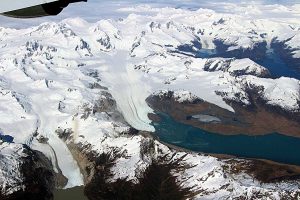
Upon disappearance of ice shelves, ice cliffs can be formed, which will be unstable if their heights are sufficient to produce stresses exceeding the strength of the ice. Cliff failure would lead to ice sheet retreat. This process is known as marine ice cliff instability (MICI) and could have the potential to cause partial collapse of the West Antarctic Ice Sheet in the coming centuries. However, there is limited evidence to confirm the occurrence of MICI in the present or in the past, as well as low agreement on the physical mechanism of MICI, so its potential future impact is very uncertain (IPCC, 2019, Cross-chapter Box 8, §4.2.3.1.2).
IPCC (2019) also includes projections for long-term scenarios, beyond 2100, with results from model studies indicating multi-metre SLR by 2300. In particular, the projected cumulative SLR to 2300 is of 0.6–1.07 m under RCP2.6 and 2.3–5.4 m under RCP8.5. Regarding the contributions from glaciers and ice sheets, all studies coincide in that the glacier contribution will be of limited importance, as, by then, they will have lost much of its mass and many glaciers will have completely disappeared. Concerning the contribution from the ice sheets, there are notable discrepancies among the results from the various studies, which are accompanied by large uncertainties. The latter are mostly related with the expected effects of dynamic instability processes such as MISI and MICI, which could imply a partial collapse of the West Antarctic Ice Sheet. Accordingly, the level of confidence of these results is rated by IPCC (2019) as low confidence. We note that there are also studies indicating an stabilising effect by solid-Earth processes that would exert a negative feedback on retreat. These processes include viscoelastic bedrock uplift upon strong decrease of the overlying ice mass, and gravitational effects reducing the water depth at the grounding line.
However, their effects on the grounding line retreat are expected to be minimal until after ~2250. Moreover, it is not known how the uncertainties on the lateral variations of the Earth’s viscosity structure under the Antarctic Ice Sheet could impact these results. Consequently, these possible stabilizing effects are only expected to weakly slow-down SLR over the twenty-first century, although they could become important on multi-century and millennial time scales (IPCC, 2019, §4.2.3.1.2 & 4.2.3.5).
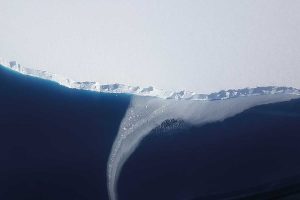
For Greenland, sustained surface warming might lead, in the long term, to significant, perhaps irreversible, retreat of the ice sheet as a consequence of two positive feedback mechanisms. On one hand, the elevation-surface mass balance feedback, consisting in increased surface melt as the surface of the ice sheet evolves to lower and warmer elevations, further increasing ablation. On the other, the albedo-melt feedback, whereby melt increases by the higher heat absorption due to the darkening of the ice surface by the presence of liquid water, reduction of the extent of summer surface snow cover (and increase of that of bare ice) and biological processes. However, the amount and duration of warming required to trigger an irreversible retreat is highly uncertain (IPCC, 2019, § 4.2.3.5).
Concluding remarks
As we have seen, the global mean sea level is expected to increase at an accelerated rate over the twenty-first century and beyond, with important impacts on low-lying coastal areas and islands, which are home to many human communities and sustain a variety of ecosystems. Moreover, sea-level rise is not uniformly distributed geographically and, in certain regions, adds up to terrain subsidence due to over-extraction of groundwater, making these zones prone to even more important impacts. Expected impacts from SLR include coastal erosion and flooding, which will be exacerbated, under climate warming, by intensified marine heatwaves, and associated extreme meteorological events, as well as by extreme wave heights. All of these impacts and associated risks are amply discussed in IPCC (2019, Ch. 4–9), which also analyses mitigation and adaptation strategies.
Along the twenty-first century, both thermal expansion of the ocean and mass loss from glaciers and ice sheets will continue to be the main contributors to SLR. Beyond the twenty-first century, the progressive absorption of heat by the ocean will further contribute to SLR for several centuries. The largest uncertainty on long time scales corresponds to the contribution by the ice sheets. Regarding the latter, all models agree that only low-emission scenarios, like RCP2.6, will be able to prevent substantial future ice loss.
The specific paths of future evolution may depend to a high extent on whether certain tipping points are reached or not, and, if reached, on its timing. The two most critical tipping points are, first, the threshold at which the combination of elevation-surface mass balance and albedo-melt feedbacks might cause irreversible retreat of the Greenland Ice Sheet, and second, the thresholds for surface melt and submarine melt under the ice shelves in West Antarctica that might trigger irreversible retreat of the ice sheet, involving MISI and possibly MICI processes. The chance of surpassing these tipping-point is of course much higher for RCP8.5 than for RCP2.6. On millennial time scales, both ice sheets have tipping points at or slightly above the 1.5–2.0 °C threshold (Pattyn et al., 2018). RCP1.9 would therefore be the ideal scenario, as it keeps global warming under 1.5 °C, in agreement with the goals of the Paris Agreement.
In conclusion, SLR on centennial and millennial time scales is critically dependent on the emission scenario considered, emphasising the importance of mitigating the emissions of greenhouse gases for minimising the impacts and risks associated to sea-level rise.
Notes
1. Following common practice, we will distinguish between glaciers (encompassing both glaciers and ice caps) and ice sheets, which refers only to the large ice sheets of Greenland and Antarctica. (Go back)
2. Firn is the term used to denote the material at intermediate stages between snow and ice. Snow that has survived at least a winter becomes firn. Firn becomes ice when the air bubbles between the ice crystals become disconnected, which happens at a pressure of ~840 kg m3. (Go back)
3. A related term is calving flux. This refers to ice discharge through a flux gate close to the calving front minus the mass change resulting from the advance or retreat of the glacier terminus. (Go back)
4. The grounding line is the line where a sea-terminating ice sheet loses contact to the ground and becomes a floating ice shelf (or a floating ice tongue, in the case of a sea-terminating glacier).(Go back)
5. Radiative forcing is the difference between the solar radiation absorbed by the Earth and the energy radiated back to space. (Go back)
References
Bamber, J. L., Westaway, R. M., Marzeion, B., & Wouters, B. (2018). The land ice contribution to sea level during the satellite era. Environmental Research Letters, 13(6), 063008. https://doi.org/10.1088/1748-9326/aac2f0
Brun, F., Berthier, E., Wagnon, P., Kääb, A., & Treichler, D. (2017). A spatially resolved estimate of High-Mountain Asia glacier mass balances from 2000-2016. Nature Geoscience, 10, 668–673. https://doi.org/10.1038/NGEO2999
Cowton, T. R., Sole, A. J., Nienow, P. W., Slater, D. A., & Christoffersen, P. (2018). Linear response of east Greenland’s tidewater glaciers to ocean/atmosphere warming. Proceedings of the National Academy of Sciences, 115(31), 7907–7912. https://doi.org/10.1073/pnas.1801769115
Enderlin, E. M., Howat, I. M., Jeong, S., Noh, M.-J., Van Angelen, J. H., & Van den Broeke, M. R. (2014). An improved mass budget for the Greenland ice sheet. Geophysical Research Letters, 41(3), 866–872. https://doi.org/10.1002/2013GL059010
Forster, R. R., Box, J. E., van den Broeke, M. R., Miège, C., Burgess, E. W., van Angelen, J. H., Lenaerts, J. T. M., Koenig, L. S., Paden, J., Lewis, C., Gogineni, S. P., Leuschen, C., & McConnell, J. R. (2013). Extensive liquid meltwater storage in firn within the Greenland ice sheet. Nature Geoscience, 7(2), 95–98. https://doi.org/10.1038/ngeo2043
Hanna, E., Pattyn, F., Navarro, F., Favier, V., Goelzer, H., van den Broeke, M. R., Vizcaino, M., Whitehouse, P. L., Ritz, C., Bulthuis, K., & Smith, B. (2020). Mass balance of the ice sheets and glaciers – Progress since AR5 and challenges. Earth-Science Reviews, 201, 102976. https://doi.org/10.1016/j.earscirev.2019.102976
Hock, R., Bliss, A., Marzeion, B., Giesen, R., Hirabayashi, Y., Huss, M., Radić, V., & Slangen, A. (2019). GlacierMIP – A model intercomparison of global-scale glacier mass-balance models and projections. Journal of Glaciology, 65(251), 453–467. https://doi.org/10.1017/jog.2019.22
Hofer, S., Tedstone, A. J., Fettweis, X., & Bamber, J. L. (2017). Decreasing cloud cover drives the recent mass loss on the Greenland Ice Sheet. Science Advances, 3(6), e1700584. https://doi.org/10.1126/sciadv.1700584
IPCC. (2019). IPCC special report on the ocean and cryosphere in a changing climate. H. – O. Pörtner, D. C. Roberts, V. Masson-Delmotte, P. Zhai, M. Tignor, E. Poloczanska, … N. M. Weyer (Eds.). https://www.ipcc.ch/site/assets/uploads/sites/3/2019/12/SROCC_FullReport_FINAL.pdf
Jenkins, A., Shoosmith, D., Dutrieux, P., Jacobs, S., Kim, T. W., Lee, S. H., Ha, H. K., & Stammerjohn, S. (2018). West Antarctic Ice Sheet retreat in the Amundsen Sea driven by decadal oceanic variability. Nature Geoscience, 11(10), 733–738. https://doi.org/10.1038/s41561-018-0207-4
Marzeion, B., Champollion, N., Haeberli, W., Langley, K., Leclercq, P., & Paul, F. (2017). Observation-based estimates of global glacier mass change and its contribution to sea-level change. Surveys in Geophysics, 38(1), 105–130. https://doi.org/10.1007/s10712-016-9394-y
Medley, B., & Thomas, E. R. (2018). Increased snowfall over the Antarctic Ice Sheet mitigated twentieth-century sea-level rise. Nature Climate Change, 9(1), 34–39. https://doi.org/10.1038/s41558-018-0356-x
Pattyn, F., Ritz, C., Hanna, E., Asay-Davis, X., DeConto, R., Durand, G., Favier, L., Fettweis, X., Goelzer, H., Golledge, N. R., Kuipers Munneke, P., Lenaerts, J. T. M., Nowicki, S., Payne, A. J., Robinson, A., Seroussi, H., Trusel, L. D., & van den Broeke, M. (2018). The Greenland and Antarctic ice sheets under 1.5 ℃ global warming. Nature Climate Change, 8(12), 1053–1061. https://doi.org/10.1038/s41558-018-0305-8
Reese, R., Gudmundsson, G. H., Levermann, A., & Winkelmann, R. (2018). The far reach of ice-shelf thinning in Antarctica. Nature Climate Change, 8(1), 53–57. https://doi.org/10.1038/s41558-017-0020-x
Rott, H., Abdel Jaber, W., Wuite, J., Scheiblauer, S., Floricioiu, D., van Wessem, J. M., Nagler, T., Miranda, N., & van den Broeke, M. R. (2018). Changing pattern of ice flow and mass balance for glaciers discharging into the Larsen A and B embayments, Antarctic Peninsula, 2011 to 2016. The Cryosphere, 12, 1273–1291. https://doi.org/10.5194/tc-12-1273-2018
Steger, C. R., Reijmer, C. H., van den Broeke, M. R., Wever, N., Forster, R. R., Koenig, L. S., Kuipers Munneke, P., Lehning, M., Lhermitte, S., Ligtenberg, S. R. M., Miège, C., & Noël, B. P. Y. (2017). Firn meltwater retention on the Greenland Ice Sheet: A model comparison. Frontiers in Earth Science, 5, 3. https://doi.org/10.3389/feart.2017.00003
Straneo, F., Heimbach, P., Sergienko, O., Hamilton, G., Catania, G., Griffies, S., Hallberg, R., Jenkins, A., Joughin, I., Motyka, R., Pfeffer, W. T., Price, S. F., Rignot, E., Scambos, T., Truffer, M., & Vieli, A. (2013). Challenges to understanding the dynamic response of Greenland’s marine terminating glaciers to oceanic and atmospheric forcing. Bulletin of the American Meteorological Society, 94(8), 1131–1144. https://doi.org/10.1175/BAMS-D-12-00100.1
Zemp, M., Huss, M., Thibert, E., Eckert, N., McNabb, R., Huber, J., Barandun, M., Machguth, H., Nussbaumer, S. U., Gärtner-Roer, I., Thomson, L., Paul, F., Maussion, F., Kutuzov, S., & Cogley, J. G. (2019). Global glacier mass changes and their contributions to sea-level rise from 1961 to 2016. Nature, 568(7752), 382–386. https://doi.org/10.1038/s41586-019-1071-0
Acknowledgements
This research was funded by the European Union’s Horizon 2020 research and innovation program under grant agreement No. 727890 and by project CTM2017-84441-R of the Spanish State Plan for R&D.

